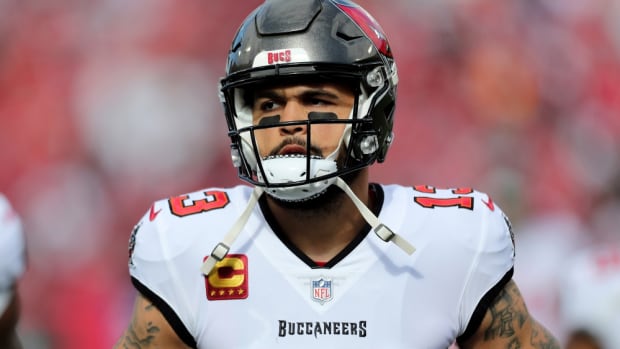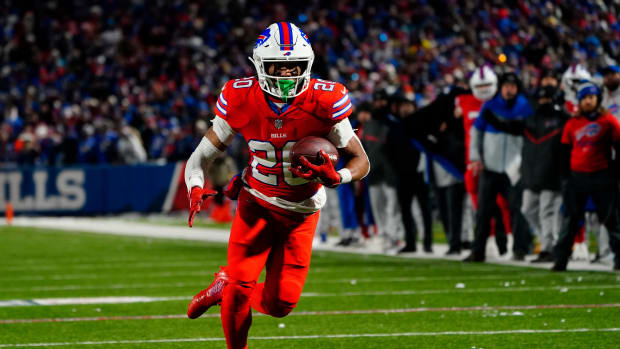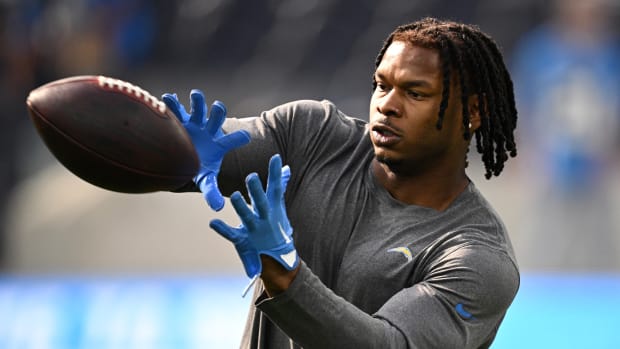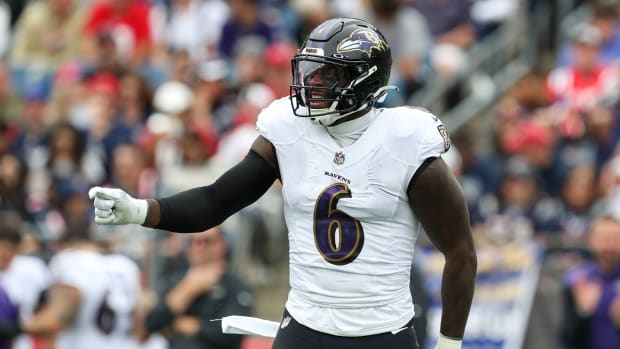Buyer Beware
Mike Wallace has been a major disappointment for the Dolphins after signing one of free agency's richest deals. (J Pat Carter/AP)
It’s certainly not the sexiest story line of Week 14, but Mike Wallace will make his return to Pittsburgh Sunday, with the former Steelers No. 1 receiver-turned-Miami Dolphin eager to lead his new team into the enemy territory of Heinz Field.
Signed to a five-year, $60 million contract by the Dolphins as one of the biggest prizes in last offseason’s free agency, Wallace has not been quite the difference-maker Miami envisioned thus far. While his play has heated up in the past two games, Wallace is still just the league’s 26th-ranked receiver in terms of yardage (743, on 56 catches, with three touchdowns), trailing the likes of rookie Keenan Allen in San Diego, as well as less-established pass catchers such as Atlanta’s Harry Douglas, Arizona’s Michael Floyd and Tennessee’s Kendall Wright. In fact, Miami’s Brian Hartline remains the Dolphins’ top receiver with 62 catches for 804 and three touchdowns, just as he was in 2012 (74 for 1,083).
With Wallace, the Dolphins are 6-6, and just off the pace in the battle for the AFC’s second-wild card spot, after being 5-7 at this same juncture of last season. Without Wallace, the Steelers are 5-7, and just a game further off the pace in the AFC wild-card race. The Steelers were 7-5 at this point in 2012, but still wound up missing the playoffs at 8-8.
Wallace is far from the only headline name to change teams this year, either by trade or free agency, and then wind up doing little to change the fortunes of their new employer. Whatever the 2013 NFL season ends up being remembered for, it won’t go down in history as The Year of the Big, Splashy Acquisition That Made All the Difference.
Cautionary tale, anyone? While final grades can't be given to any of these moves in the short term, the early results are underwhelming. At least when it comes to the we’re-only-one-piece-of-the-puzzle away mindset, big-name moves continue to make for some big misses.
To wit:
• Seattle swung the blockbuster Percy Harvin trade with Minnesota in March, sending three draft picks to the Vikings (including a first-rounder in 2013, used to select Florida State cornerback Xavier Rhodes) and then signed Harvin to a six-year contract extension that included $25.5 million guaranteed. With Harvin still struggling with his surgically repaired hip, the Seahawks so far have gotten him on the field for 19 snaps in one game, with one catch for 17 yards and a 58-yard kickoff return in a win over Minnesota in Week 11.
You've seen Percy Harvin in street clothes a lot more than you've seen him in a Seahawks uniform this season. (Elaine Thompson/AP)
• Tampa Bay landed cornerback Darrelle Revis via trade with the Jets in April, hoping to have secured one of the game’s dominant cover men and a defensive cornerstone. The Bucs surrendered the 13th pick in the 2013 draft, plus a probable third-rounder in 2014, and gave Revis a deal that could pay him as much as $96 million over six years (albeit with no guaranteed money). Coming off his ACL injury of 2012, Revis has been anything but vintage Revis of shutdown fame. He has two interceptions for the 3-9 Bucs. The Jets used that pick to take Missouri defensive tackle Sheldon Richardson, one of the strongest candidates for the league’s Defensive Rookie of the Year honor.
• Indianapolis sent its 2014 first-round pick to Cleveland for running back Trent Richardson in September, but last Sunday wound up benching 2012’s No. 3 overall draft choice in favor of veteran Donald Brown, who started the year third on the Colts’ running back depth chart. Richardson has averaged 2.8 yards per carry for Indy and hasn’t topped 60 yards rushing in any of his 10 games as a Colt.
• Beyond Wallace, this year’s free agency class—as always—featured its share of moves that make us look back and wonder what all the fuss was about. Greg Jennings hasn’t earned his No. 1 receiver money for the 3-8-1 Vikings, with 43 receptions for 517 yards and three touchdowns. Cleveland outside linebacker Paul Kruger was the Browns’ priority target in a major defensive upgrade, but the ex-Raven has just 2.5 sacks in 12 games, after registering nine for Baltimore last season, with another 4.5 during its Super Bowl run. Cleveland (4-8) remains mired in last place in the AFC North.
And veteran additions such as Steven Jackson in Atlanta, Danny Amendola in New England, Ed Reed in Houston (and now the Jets) and Dwight Freeney in San Diego simply haven’t been able to stay either healthy or productive enough to measure up to their previous track records. If they had days as difference makers in their new locales this season, they were few.
There have been successful exceptions to this year’s trend of the Big Splashy Acquisition turning into a letdown, of course. The Alex Smith and Anquan Boldin trades have worked out very nicely indeed for the Chiefs and 49ers, respectively, and where would Kansas City or San Francisco be without them? And headline free-agent signings like Reggie Bush in Detroit, Wes Welker in Denver and Elvis Dumervil in Baltimore all have been valuable additions that aided teams remaining in strong playoff contention.
But the many swings and misses on the list of 2013’s biggest deals should serve to again remind us that roster building is rarely at its best when the big-name component leads the way. As usual, it’s the guts of the draft, not the trade market or free agency, that has given us so many success stories this season, with second- and third-round finds like quarterback Mike Glennon in Tampa Bay, tight end Jordan Reed in Washington, linebacker Kiko Alonso in Buffalo, guard Larry Warford in Detroit and receiver Keenan Allen in San Diego.
The second-round running back crop is a headline development all its own this season, with Green Bay’s Eddie Lacy, Cincinnati’s Giovani Bernard, Pittsburgh’s Le’Veon Bell and Denver’s Montee Ball all contributing early and heavily, while emerging stars like Rams fifth-rounder Zac Stacy and Cardinals sixth-rounder Andre Ellington were unearthed on the final day of the draft. Those are some of the NFL’s best discoveries, though they didn’t warrant much fanfare in relative terms.







































